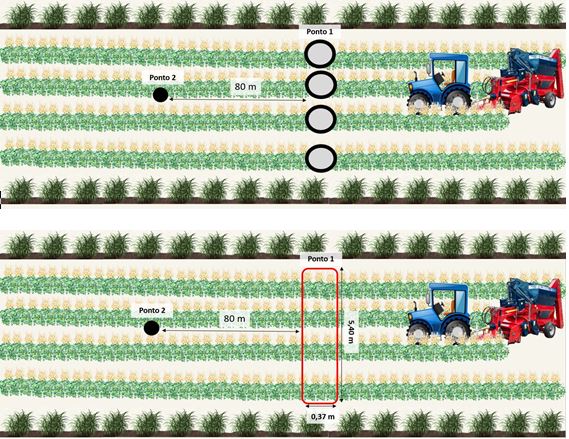Evaluation of different frames in mechanized peanut collection
DOI:
https://doi.org/10.17648/sas.v1i1.89Keywords:
Arachis hypogaea L., Quantitative losses, ProductivityAbstract
With the increase in population growth and to meet the demand, it is extremely important to seek to obtain higher productivity, and one of the factors that greatly affects productivity are losses arising from the harvest, and they need to be reduced when detected. In this way, the objective of this work was to quantify the losses according to the type of frame, during the peanut collection, and to compare which frame was the best for determining the losses. The experiment was conducted in the 2019/2020 harvest, in the municipality of Ribeirão Preto, state of São Paulo. The experimental area was installed in a Meosi system. The experimental design was in bands containing 2 treatments (circular and rectangular frame) and 20 repetitions, totaling 40 plots. Each plot was 80 m long apart. The analyzed variable was total loss, which was obtained by the sum of visible and invisible losses, which was collected during collection. After data collection, an F test was performed and when significant, the Tukey test was used. Through statistical analysis, there was a high variability in the loss data, a common fact when working with losses and mechanized harvesting, finding a statistical difference when comparing the losses of the different frames, in which the circular frame presented more reliable values "‹"‹due to the fact of having a greater representativeness of the area.
Downloads

Downloads
Published
How to Cite
Issue
Section
License
Autores concordam com os seguintes termos:
a) Os autores mantêm os direitos autorais e concedem à revista o direito de primeira publicação, com o trabalho simultaneamente licenciado sob a LicençaAttribution-NonCommercial-ShareAlike 4.0 International, que permite o compartilhamento do trabalho com reconhecimento da autoria e publicação inicial na Revista SAS. A licença permite o uso, a distribuição e a reprodução irrestrita, em qualquer meio, desde que devidamente citada a fonte. Essa licença permite também que outros remixem, adaptem e criem a partir do seu trabalho para fins não comerciais, desde que atribuam a você o devido crédito e que licenciem as novas criações sob termos idênticos.
b) Não cabe aos autores compensação financeira a qualquer título, por artigos ou resenhas publicados na South American Sciences.
c) Os conceitos expressos nos artigos publicados na South American Sciences são de inteira responsabilidade de seus autores.








